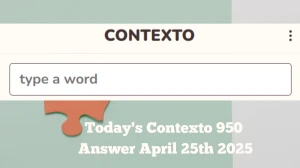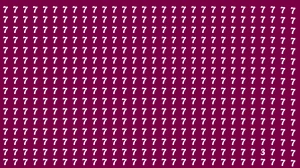Old Tax Regime
The old tax regime is the traditional income tax system in India that allows taxpayers to claim various deductions and exemptions to lower their taxable income. Under this regime, individuals can benefit from tax-saving investments and expenses such as contributions to the Public Provident Fund (PPF), National Pension Scheme (NPS), life insurance premiums, House Rent Allowance (HRA), and more. The tax slabs in this regime are progressive, meaning the tax rate increases as the income level rises. This system is especially useful for individuals who make full use of deductions and exemptions to optimize their tax savings.
| Income Tax Slabs | Tax Rate |
| Upto 2.5 Lakh | Nil |
| 2.5 - 5 Lakh | 5% |
| 5 - 10 Lakh | 20% |
| Above 10 Lakh | 30% |
New Tax Regime Applicable for FY 2025-2026
Under the new tax regime, individuals earning up to ₹12 lakhs annually can now enjoy zero tax liability due to an enhanced rebate under Section 87A. This rebate has been increased to ₹60,000, up from the previous ₹25,000. As a result, for individuals with net taxable income up to ₹12,00,000, no income tax will be payable under the new regime.
However, it’s important to note that this rebate does not apply to income taxed at special rates, such as capital gains under Section 112A. Also, marginal relief on rebate continues to be available, which provides tax relief if income slightly exceeds the threshold.
Modified Slab Rates Under New Tax Regime for FY 2025–26
| Income Tax Slabs | Tax Rate |
| Up-to Rs. 4,00,000 | NIL |
| Rs. 4,00,001 - Rs. 8,00,000 | 5% |
| Rs. 8,00,001 - Rs. 12,00,000 | 10% |
| Rs. 12,00,001 - Rs. 16,00,000 | 15% |
| Rs. 16,00,001 - Rs. 20,00,000 | 20% |
| Rs. 20,00,001 - Rs. 24,00,000 | 25% |
| Above Rs. 24,00,000 | 30% |
Tax Rates Under the New Tax Regime
The new tax regime, introduced in Budget 2020, offered concessional tax rates through revised tax slabs. However, it came with a major trade-off: most common exemptions and deductions—like HRA, LTA, Section 80C, 80D, and others—are not claimable under this regime. Because of this limitation, it initially saw low adoption.
To make the new regime more attractive, the government announced 5 key changes in Budget 2023, which remain applicable for FY 2024–25 as no changes were made in the Interim Budget 2024. Key highlights include:
Higher Tax Rebate Limit:
- Under the new tax regime, taxpayers earning up to ₹7 lakhs annually get a full tax rebate, meaning zero tax liability.
- In comparison, the rebate under the old regime applies only up to ₹5 lakhs of income.
Streamlined Tax Slabs:
- The basic exemption limit is now ₹3 lakhs under the new regime.
- The new, simplified slab structure helps reduce tax burden for many salaried and middle-income individuals.
| FY 2024-25 Tax Slab | Tax Rate |
| Upto Rs. 3,00,000 | Nil |
| Rs. 3,00,001 - Rs. 7,00,000 | 5% |
| Rs. 7,00,001 - Rs. 10,00,000 | 10% |
| Rs. 10,00,001 - Rs. 12,00,000 | 15% |
| Rs. 12,00,001 - Rs. 15,00,000 | 20% |
| More than 15,00,000 | 30% |
Comparison of Tax Rates Under Both Regimes
Starting from FY 2024–25, several key changes have been introduced to make the new tax regime more beneficial. The standard deduction of ₹50,000, which was earlier available only under the old regime, has now been extended to the new tax regime and increased to ₹75,000 exclusively for it.
For individuals receiving a family pension, the allowable deduction has been enhanced from ₹15,000 (or one-third of the pension, whichever is lower) to ₹25,000 under the new regime. High Net Worth Individuals earning above ₹5 crores will benefit from a reduced surcharge rate, which has been brought down from 37% to 25%, effectively reducing their overall tax rate from 42.74% to 39%.
Additionally, the exemption limit for leave encashment for non-government employees has seen a significant increase—from ₹3 lakhs to ₹25 lakhs—offering a substantial retirement benefit boost. Moreover, beginning FY 2023–24, the new tax regime has become the default option.
Taxpayers who wish to continue with the old regime must file their income tax return along with Form 10-IEA before the due date. The flexibility to switch between regimes annually remains, allowing taxpayers to choose the option that offers them the greatest tax advantage.
| Old Tax Regime (FY 2024-25) | New Tax Regime | ||||
| Income Slabs | Age < 60 Years & NRIs | Age 60 Years to 80 years | Age above 80 Years | FY 2024-25 | |
| Up to Rs.2,50,000 | Nil | Nil | Nil | Nil | |
| Rs.2,50,001 - Rs.3,00,000 | 5% | Nil | Nil | Nil | |
| Rs.3,00,001 - Rs.5,00,000 | 5% | 5% | Nil | 5% | |
| Rs.5,00,001 - Rs.6,00,000 | 20% | 20% | 20% | 5% | |
| Rs.6,00,001 - Rs.7,00,000 | 20% | 20% | 20% | 5% | |
| Rs.7,00,001 - Rs.7,50,000 | 20% | 20% | 20% | 10% | |
| Rs.9,00,001 - Rs.10,00,000 | 20% | 20% | 20% | 10% | |
| Rs.10,00,001 - Rs.12,00,000 | 30% | 30% | 30% | 15% | |
| Rs.12,00,001 - Rs.12,50,000 | 30% | 30% | 30% | 20% | |
| Rs.12,50,001 - Rs.15,00,000 | 30% | 30% | 30% | 20% | |
| Rs.15,00,000 and above | 30% | 30% | 30% | 30% | |
Which Tax Regime is Better for Financial Year 2025-26?
When choosing between the old and new tax regimes in India, it's essential to evaluate the available exemptions and deductions under the old tax regime first. After accounting for these benefits, the net taxable income can be calculated, which helps determine the tax liability under the old system. This amount can then be compared to the tax liability under the new regime, which offers lower tax rates but no major exemptions or deductions.
The recommended approach is to choose the regime with the lower tax liability. It's also important to inform your employer of your preferred regime so they can deduct Tax Deducted at Source (TDS) accordingly.
Additionally, if you have any losses from house property, capital gains, or business/profession, they should be factored into your decision. Notably, under the new tax regime, you cannot carry forward or set off such losses, including those from previous years. This could affect your future tax planning and income calculations, making a careful assessment all the more crucial.
Which Regime is Better if the Taxable Income is Less than ₹12 Lakh?
If your taxable income is below ₹12 lakh, the new tax regime is highly favorable, as you will have zero tax liability due to the enhanced rebate under Section 87A. Even if your gross taxable income is slightly above ₹12 lakh, you can still reduce it to ₹12 lakh or below by claiming the standard deduction of ₹75,000 and factoring in your employer's contribution to the NPS. Doing so will make you eligible for the full rebate, effectively bringing your tax liability to zero under the new regime.
Which Regime is Better if the Taxable Income is Between 12 and 24 Lakh?
For individuals with a net taxable income between ₹12 lakh and ₹24 lakh, choosing between the old and new tax regimes depends largely on the amount of deductions they can claim. A salaried employee earning more than ₹16 lakh annually may still end up paying zero tax by effectively using available deductions.
These include the ₹75,000 standard deduction, the employer’s contribution to the NPS, and additional tax-free reimbursements, such as mobile and conveyance reimbursements. If such deductions significantly lower the taxable income, the individual may become eligible for rebates under the new regime, leading to zero or minimal tax liability.
Which Regime is Better if Taxable Income Exceeds 24 Lakh?
If your taxable income exceeds ₹24 lakh, selecting the better tax regime depends on how much deduction you are eligible to claim. The old tax regime allows multiple deductions, while the new tax regime offers lower tax rates but does not permit most exemptions or deductions.
There is a breakeven point where the tax liability under both regimes becomes equal. If you can claim sufficient deductions (such as under 80C, 80D, HRA, etc.), the old regime may be more advantageous. On the other hand, if your deductions are limited, the new regime might result in a lower overall tax burden.
Therefore, calculating and comparing tax liabilities under both regimes is crucial to making the best choice.
Final Thoughts
Many taxpayers often struggle to choose between the old and new tax regimes due to the differences in how deductions and exemptions are handled. The new tax regime is tailored for individuals who have minimal deductions or limited eligibility for exemptions under Section 10, standard deductions, or employer contributions to pension schemes. It suits those with significant personal financial responsibilities, such as loan repayments or medical expenses, or those who want a simpler tax filing process without extensive paperwork.
In contrast, the old tax regime benefits individuals who can claim multiple deductions and exemptions. It is particularly favorable for senior citizens, especially those earning primarily through interest income, as they can claim up to ₹50,000 as a deduction under Section 80TTB.
We hope this article has given you a clear understanding of the old and new tax regimes. Choose the tax regime that best aligns with your income.






